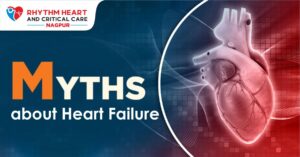Pacemaker implantation is a crucial procedure for individuals with heart rhythm disorders, aiming to restore and maintain a healthy heart rhythm. This blog will explore how pacemaker implantation supports long-term heart health, enhancing quality of life and providing relief from symptoms associated with various heart conditions.
Understanding Pacemaker Implantation
Pacemaker implantation involves the surgical insertion of a small device that helps regulate the heart’s rhythm. The pacemaker consists of a pulse generator, which houses the battery and electronic circuitry, and leads (wires) that are placed in the heart. These components work together to detect irregular heartbeats and deliver electrical impulses to ensure a steady and regular heartbeat.
Types of Pacemakers
- Single-Chamber Pacemakers: These devices have one lead that is usually placed in the right ventricle. They are typically used for patients with bradycardia (slow heart rate) where only one chamber of the heart needs pacing.
- Dual-Chamber Pacemakers: These devices have two leads, one placed in the right atrium and one in the right ventricle. They are used to coordinate the timing between the atrium and ventricle, beneficial for patients with conditions that affect the heart’s ability to properly coordinate beats.
- Biventricular Pacemakers: Also known as cardiac resynchronization therapy (CRT) devices, these have three leads—one in each ventricle and one in the right atrium. They are used to treat heart failure by improving the synchronization of the heart’s contractions.
Indications for Pacemaker Implantation
Pacemaker implantation may be indicated for a variety of conditions, including:
- Bradycardia: When the heart beats too slowly, leading to symptoms such as fatigue, dizziness, or fainting.
- Heart Block: A condition where the electrical signals in the heart are partially or completely blocked, leading to an irregular heartbeat.
- Atrial Fibrillation: In cases where the heart’s upper chambers beat irregularly, a pacemaker can help regulate the heart rate.
- Congenital Heart Conditions: Some patients are born with heart rhythm abnormalities that may require a pacemaker.
Benefits of Pacemaker Implantation

- Restoring Normal Heart Rhythm– One of the primary benefits of pacemaker implantation is its ability to restore a normal heart rhythm. For individuals with arrhythmias—such as bradycardia (slow heart rate) or atrial fibrillation (irregular heartbeat)—the pacemaker provides the necessary electrical stimulation to maintain a consistent heart rate. This helps prevent symptoms like dizziness, fatigue, and fainting, which can significantly impact daily life.
- Improving Quality of Life– By managing irregular heartbeats, a pacemaker can greatly improve quality of life. Patients who previously experienced debilitating symptoms may find relief and experience a return to normal activities. The ability to engage in daily tasks without the constant fear of sudden dizziness or fainting is a significant advantage, contributing to overall well-being and life satisfaction.
- Enhancing Exercise Tolerance– Pacemakers can also enhance exercise tolerance. For many patients with heart rhythm disorders, physical activity can be challenging due to irregular heartbeats. A pacemaker ensures that the heart maintains an appropriate rate during exercise, allowing individuals to engage in physical activities more comfortably and safely.
- Reducing the Risk of Complications– Pacemaker implantation helps mitigate the risk of serious complications associated with heart rhythm disorders. By maintaining a regular heartbeat, the device reduces the likelihood of complications such as heart failure or stroke. This preventive aspect of pacemaker implantation is crucial for long-term heart health and overall safety.
- Customizable and Adaptable Technology– Modern pacemakers are equipped with advanced technology that allows for customization and adaptation to individual needs. These devices can be programmed to adjust their settings based on the patient’s specific heart rhythm patterns and activity levels. Additionally, some pacemakers come with remote monitoring capabilities, enabling healthcare providers to track heart health and make adjustments as needed without requiring frequent office visits.
Post-Implantation Care
After pacemaker implantation, patients are typically monitored for a short period to ensure proper device function and address any immediate concerns. Follow-up appointments are essential to assess the device’s performance, make necessary adjustments, and evaluate overall heart health. Patients are also advised on lifestyle modifications and precautions to ensure the longevity of the pacemaker and maintain optimal heart health.
Lifestyle Adjustments
After pacemaker implantation, patients may need to make certain lifestyle adjustments:
- Avoiding Heavy Lifting: Patients should avoid lifting heavy objects or engaging in activities that might dislodge the leads.
- Regular Check-ups: Routine follow-ups are essential to ensure the pacemaker is functioning correctly and to address any concerns.
- Monitoring for Symptoms: Patients should be vigilant for any unusual symptoms, such as swelling, persistent pain, or changes in heartbeat, and report them to their healthcare provider.
Technological Advances
Recent advancements in pacemaker technology include:
- Leadless Pacemakers: These are small, self-contained devices that do not require leads. They are implanted directly into the heart and are less invasive.
- Advanced Programming: Modern pacemakers offer sophisticated programming options that can be adjusted based on patient needs and activities.
- Remote Monitoring: Many pacemakers now come with remote monitoring capabilities, allowing for continuous observation of heart rhythms and device performance without frequent in-person visits.
Highlights:
Pacemaker implantation is a significant advancement in managing heart rhythm disorders. With various types of devices and advanced technology, patients can achieve better heart health and improved quality of life. If you’re experiencing symptoms related to heart rhythm issues, it’s important to consult with a specialist to explore the best treatment options for your condition. For more detailed information and to understand how pacemaker implantation might benefit you, visit our website or contact Rhythm Heart and Critical Care Hospital.
If you want to learn about Cardiac pacemaker, kindly go through the provided resources for better understanding.





